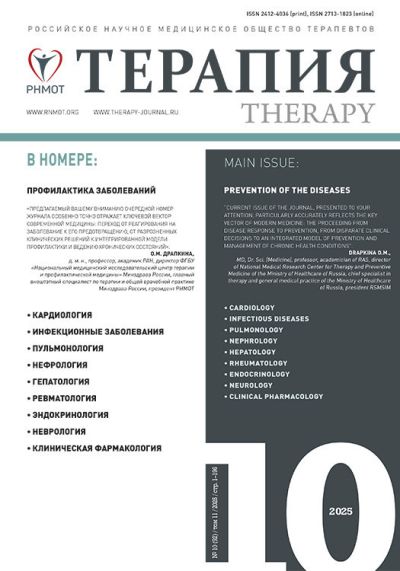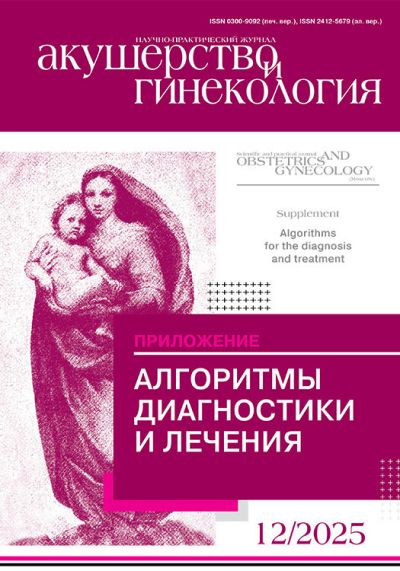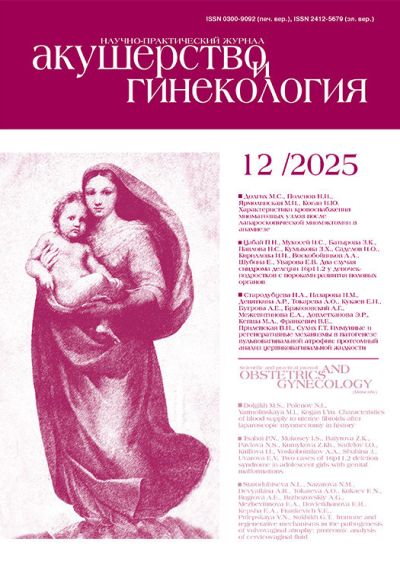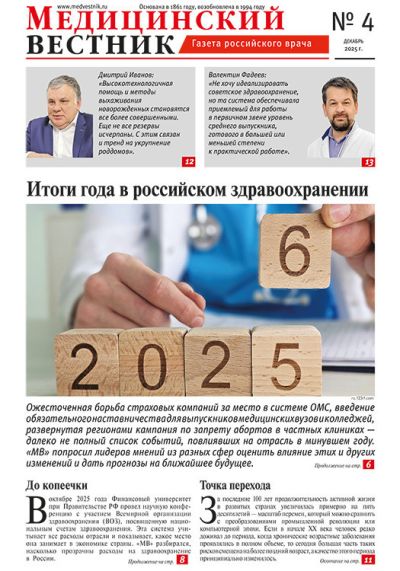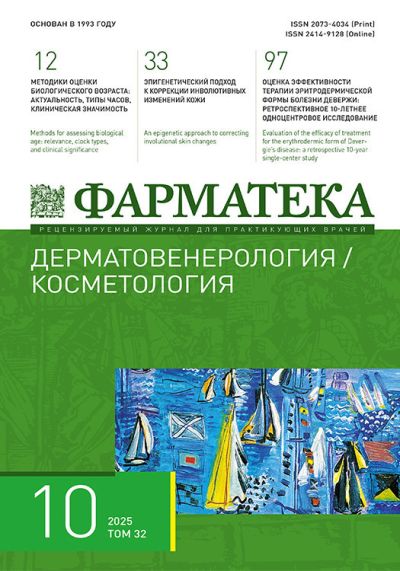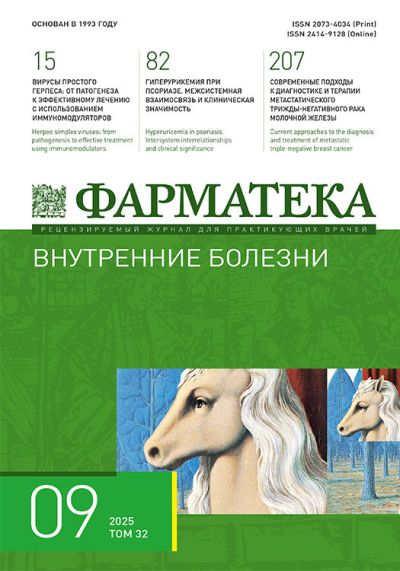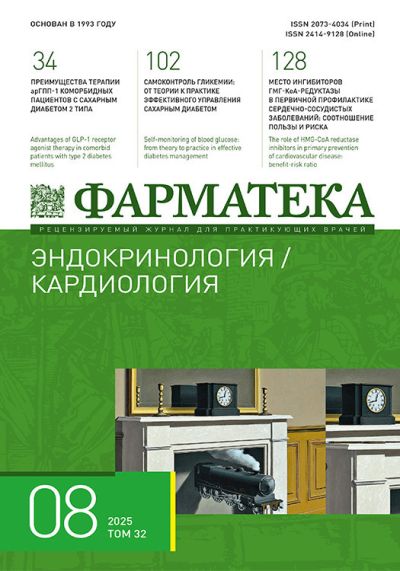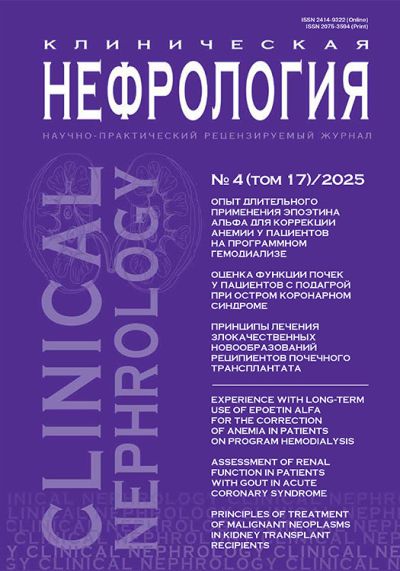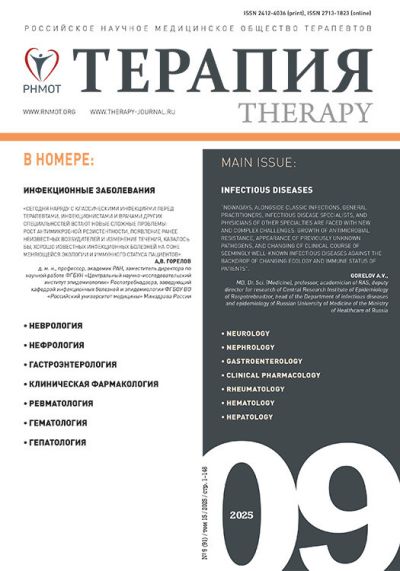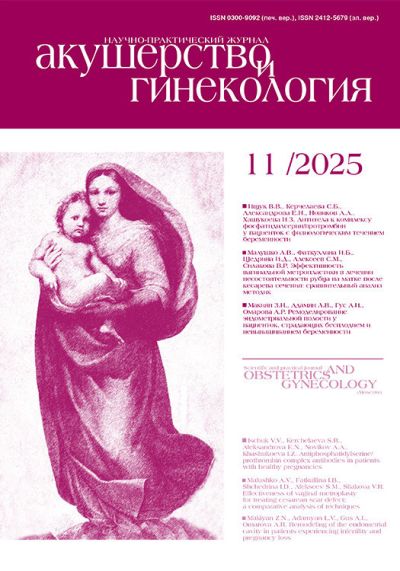Урология №3 / 2021
Тип сосудистого анастомоза и ближайшие результаты трансплантации почки
1) Кафедра урологии, медицинский факультет, Исфаханский университет медицинских наук, Исфахан/Иран;
2) Исследовательский центр метаболических болезней печени, Исфаханский университет медицинских наук, Исфахан/Иран.
Существует два основных метода создания сосудистого анастомоза – «конец-в-конец» и «конец-в-бок». Целью исследования было изучить корреляцию типа анастомоза с ближайшими результатами трансплантации почки. С помощью программы IPSS оценивались такие факторы, как пол, возраст, длительность госпитализации, тип трансплантации (от трупного или живого донора), признаки острого канальцевого некроза, предпочтении артерии или вены, а также биохимические показатели. Исследуемая популяция включала 84 женщины и 176 мужчин (174 пересадки от живых доноров и 86 трансплантаций трупных почек). Техника операции включала вначале артериальный, затем венозный анастомоз (FASV; n=209) или вначале венозный, затем артериальный анастомоз (FVSA; n=51). Сосудистый анастомоз выполняли следующим образом: группа 1 (FASV «конец-в-конец»; n=52%), группа 2 (FASV «конец-в-бок»; n=29%), группа 3 (FVSA «конец-в-конец»; n=15%) и группа 4 (FVSA «конец-в-бок»; n=5%). Согласно результатам, при пересадке почки в группе 1 чаще использовали трупную почку, чем в группе 3 (p=0,02), а частота острого канальцевого некроза была ниже при создании артериального анастомоза «конец-в-конец», а затем венозного анастомоза (группа 1 vs. группа 2; p=0,002, группа 1 vs. группа 4; p=0,03). Несмотря на более частое использование трупных почек, при выполнении вначале артериального, затем венозного анастомоза («конец-в-конец») острый канальцевый некроз развивается реже, чем при других вариантах. Необходимо провести больше исследований по данному вопросу.
Introduction. The original surgical technique that called kidney transplantation, as a treatment of choice in patients with end stage renal disease (ESRD), was first introduced in the year 1950. From that time up to now, improvements in the erea of kidney transplantation are due to refinement in the technical quality of the surgery and developments in the immunosuppressive regimen [1, 2]].
Open procedure in the right iliac fossa in most occasions is still the gold standard method of surgery. Technique regarding to vascular anastomosis suggested by Carrel in 1902 and the implanation in the iliac vessels by Kuss in 1951 [3]. Vascular and ureteric anastomosis are the basic technique in transplantation of a kidney, but vascular anastomosis of a renal artery to the external or internal iliac artery and the renal vein to the external iliac vein declared as the critical part associated with this procedure [4, 5].
However, still there are concern regarding to, preference of end-to-side anastomosis to the external iliac artery or original end-to-end to the internal iliac artery anastomosis.
The technique that has been assumed since 1950 is the anastomosis of renal vein first followed by anastomosis of the renal artery. By this approach, the rates of complications associated with early thromobosis and late stenosis of renal vessel were reported up to 6 and 23% respectively. In 1993 Sutherland et al., confirmed that end‐to-side anastomosis to the external iliac artery is the preferred method to the original end‐to-end internal iliac artery anastomosis.
Another single center study showed that anastomotic technique for transplantation of kidney based on first artery and then vein (FASV) was associated with low rates of early post-transplant vascular and urological complications when compared to the conventional vein first (FVSA) vascular anastomosis [4–8]].
Other factors that could affect transplant outcome could be mentioned as; strategy of gaining for a suitable donor, time, in situ perfusion, graft conservation solution, obtaining aortic cuffs and an extention of the right renal vein using the inferior vena cava [8]. In addition the relative contribution of donor versus other factors on clinical outcomes is also unknown [9, 10]]. Early and late acute rejection can occur less than and after three months after kidney transplantation respectively. Acute rejection could be correlate to a reduce in graft survival. In addition the incidence of acute rejection could be associated with a synergistic effect of donor-specific antibodies [11–13]].
Another most common cause of injury to the transplanted kidney is acute tubular necrosis (ATN) that is responsible for approximately 90% of acute renal kidney failure episodes occurring within the first few weeks following renal transplantation. The pattern of injury that defines acute tubular necrosis includes renal tubular damage and death. This phenomenon is observed in 34% of cadaver transplant recipients and 9% of those with live donor kidneys [14–19].
As published articles regarding to surgical vascular anastomotic and its’ correlation with clinical outcome are limited, therefore this study aims to investigate the preference (FASV or FVSA) and performance (end-to-end or end-to-side) with early clinical outcome in kidney transplant recipients in Isfahan/Iran.
Methods. A full descriptive access to 260 kidney transplant recipients records’ in a tertiary hospital; Khorshid, Isfahan/Iran was achieved. The study was conducted to Isfahan Kidney Transplant research Center (IKTRC) and was approved by the institutional review board (Ethics Code No. 296013). Data for each individual kid...

